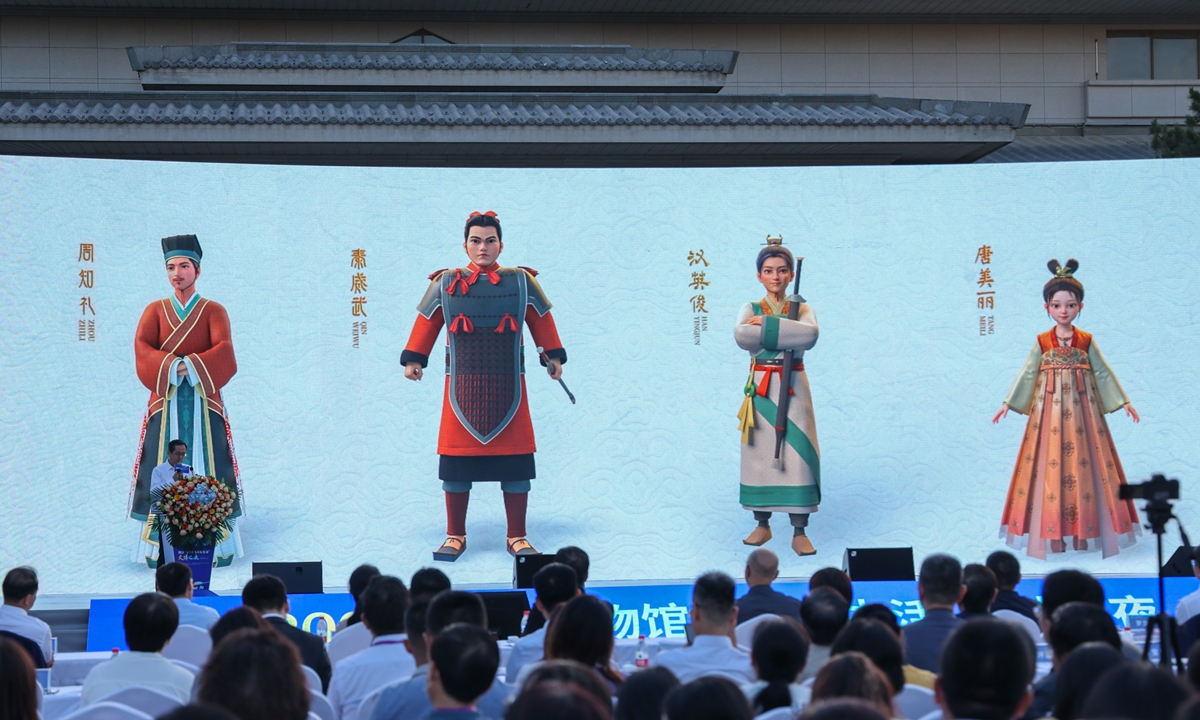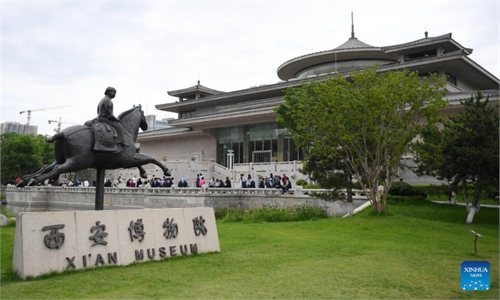ARTS / CULTURE & LEISURE
NW China’s Shaanxi Province introduces digital ambassadors
Four figures diversify presence of rich history

Photo: IC
Earlier this week, the Shaanxi Provincial Cultural Heritage Administration introduced four digital ambassadors as part of its bid to strengthen its digital presence.A cultural powerhouse, Northwest China's Shaanxi Province is renowned for its rich cultural heritage and deep historical roots. The capital city Xi'an served as China's capital for 13 dynasties, including the Western Zhou (1046BC-771BC), Qin (221BC-206BC), Western Han (206BC-AD25) and Tang (618-907) dynasties.
Zhou Zhili, Qin Weiwu, Han Yingjun and Tang Meili are the names of the four digital characters that respectively represent the Zhou, Qin, Han and Tang dynasties.
"Making cultural elements an active part of the internet is vital for the preservation of cultural heritage nowadays," Guo Peihui, an official with the Shaanxi Provincial Cultural Heritage Administration, who oversees the digital ambassador program, told the Global Times on Wednesday.
"Digital characters are popular among the young generations. They can help make history and cultural elements easier to understand."
The digital characters have been crafted to embody the distinct characteristics of their respective eras. For instance, their names in Chinese represent the different cultures of the dynasties.
"Aligning the characters' names with their respective personalities and cultural roles can also boost the popularity of the culture of these various dynasties," Guo noted, adding this approach aims to enhance people's cultural perception and facilitate effective cultural dissemination.
As one of the cradles of ancient Chinese civilization, Shaanxi, whose cultural significance and contributions to Chinese history are unparalleled, boasts a wealth of cultural treasures and a profound historical legacy, from the iconic Terracotta Warriors to the ancient Silk Road. This has granted Shaanxi a pivotal role in shaping China's cultural and historical landscape.
The four digital figures could diversify the way the province's rich history is presented and is sure to be more effective than relying on one single figure.
"Using one single character will limit the way we can present things digitally, as coordinating the four characters can make interactions with audiences more captivating," Guo said.
The digital ambassadors will utilize cutting-edge technology to transcend the limitations of time and space, said Guo, as the characters are expected to have a range of abilities to engage with the audience and offer immersive cultural experiences.
While the virtual characters are still in the early stages of development, their envisioned applications include interactive conversations, presenting historical information, showcasing traditional rituals or customs through animated works and participating in livestreaming broadcasts and programs, Guo said.
Analysts say the virtual characters can bridge the gap between online and offline experiences, attracting more visitors to visit cultural institutions and expanding the boundaries of marketing and cultural tourism, thus fostering a new ecosystem for the cultural industry.
"The project will not only enrich cultural experiences but also propel the development of the cultural industry, combining heritage preservation with utilization and fostering the growth of the cultural creative industry," a Beijing-based cultural expert told the Global Times on Wednesday.
"Their future integration into exhibitions and interactive experiences can diversify the way people learn about and appreciate history. By combining the power of storytelling, technology and cultural preservation, putting modern elements into ancient cultural resources could help make our cultural heritage more vibrant both online and offline," said the expert.



